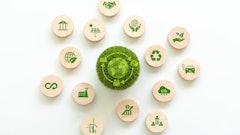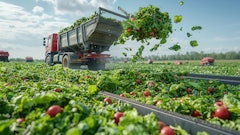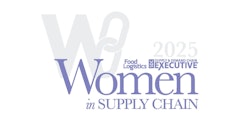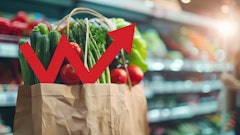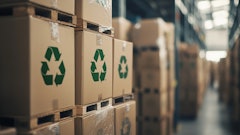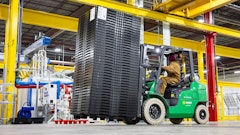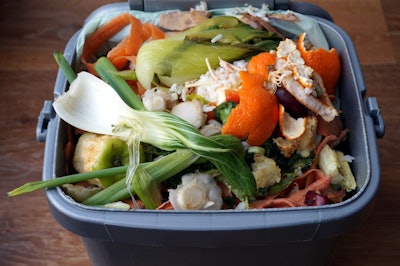
Sustainability labels have become increasingly common in grocery stores. These labels adorn products from coffee to chocolate, as food and beverage companies strive to prove their commitment to sustainability and quality. The demand for sustainability certifications is driven by several factors, including emerging government regulations such as the EU Deforestation Regulation (EUDR) and mounting stakeholder pressure. Consumer activism is also playing a role as more shoppers seek products aligning with their values. In fact, a joint study from McKinsey and NielsenIQ found that products making environmental, sustainable, governance (ESG)-related claims averaged 28% cumulative growth over the past five-year period vs. 20% for products that made no such claims.
But while consumers want sustainable products, consumer packaged goods (CPG) executives report challenges in generating sufficient consumer demand. The paradox likely lies in the fact that sustainability certifications can be confusing for consumers. The sheer number of different certifications, each with its own set of criteria and focus areas, can be overwhelming and consumers often struggle to understand what each certification truly means or how they differ from one another. This confusion can lead to decision paralysis at the point of purchase or skepticism about the true impact of these certifications, potentially dampening the demand for certified products despite consumers' stated preferences for sustainability.
Deciphering sustainability labels
Sustainability labels, such as Organic, Fair Trade, and Rainforest Alliance, carry specific meanings and implications for environmental impact. For instance, an “Organic” label indicates that the product was grown without synthetic pesticides or fertilizers, while “Fair Trade” ensures fair compensation for producers in developing countries throughout the supply chain. Similarly, the “Rainforest Alliance” label signifies that the product was produced in a way that promotes biodiversity, sustainable land use, and the well-being of local communities, often in tropical regions.
Sustainability certifications go beyond vague green marketing claims, like “eco-friendly.” They have to be proven, earned, and certified (and often recertified annually) to be placed on product packages. Achieving and maintaining these certifications is a challenging process, but one that’s essential for brands to meet consumers’ demands for greater transparency and trustworthiness. Recognized certifications will validate their sustainability efforts and separate them from others trying to make unsupported environmental claims.
Certain commodities are more heavily monitored for environmental impacts due to their significant ecological footprint. Coffee, cocoa, and palm oil, for example, are closely scrutinized for their potential links to deforestation, compromised labor practices and land rights issues. These commodities are typically supervised by on-the-ground audits to ensure compliance with certification standards.
Understanding the sustainability certification process
The certification journey often begins with mapping the supply chain, down to the exact geo-location of each plot and grower and forming relationships with the different suppliers throughout the supply chain. This is followed by rigorous audits, documentation of farming practices, and ongoing compliance monitoring. Food and beverage companies often face significant hurdles in securing certifications due to the complexity of their supply chains. Two major barriers are:
· A lack of supply chain visibility. The more intermediaries involved from field to store, the harder it becomes to accurately trace the source and cultivation practices of ingredients.
· A lack of grower participation. It can be challenging to convince farmers to cooperate in lengthy surveys if they don't see direct benefits.
These challenges are compounded by the need to manage various versions of questionnaires tailored to specific crops, regions, languages, and certification requirements. Aggregating data from numerous small-scale farms scattered across various regions, often with different data structures and standards, adds another layer of complexity.
But in overcoming these challenges, businesses will not only prove to consumers that their products are what they say, but also future-proof their supply chains against emerging regulations including the EUDR and others.
Optimizing sustainability certifications through technology
Fortunately, technology is streamlining the certification process for businesses, making it easier for them to meet consumer expectations. Manual data entry and outdated methods are slowly fading away as companies adopt robust databases, mobile survey tools and analytics to streamline the tracking and reporting of sustainable practices. Features such as digital data capture, real-time monitoring of key performance indicators, digital process management, and automated reporting functionalities can significantly enhance efficiency. Further, advanced analytics tools can provide valuable insights into operational performance, identify areas for optimization, and help track progress toward certification goals.
Leveraging technology for sustainability certifications enables companies to meet the growing consumer demand for sustainable products while also improving their operational efficiency and supply chain transparency. These technologies significantly reduce the time and effort required for data collection and analysis. For example, a leading food and beverage brand successfully cut their certification process from over two months to just a few days by using digitized software. By modernizing and automating the certification process, and streamlining the tracking of sustainable practices, farmers can focus on what they do best — cultivating quality produce — and reap rewards for their efforts.
Certifications drive trust and sustainability
Sustainability certifications play a crucial role in the food and beverage industry, building greater trust between farmers and buyers and creating more sustainable and transparent supply chains. They can not only improve consumer confidence in the quality and ethical sourcing of products, separating sustainable businesses from greenwashers, but also help companies reinforce and enhance the resilience of their supply chains as emerging regulations evolve and food and beverage operations come under further scrutiny.











